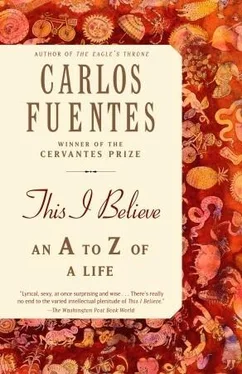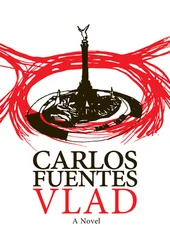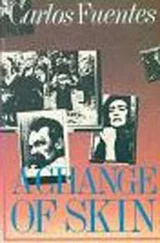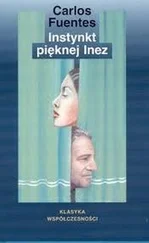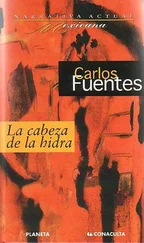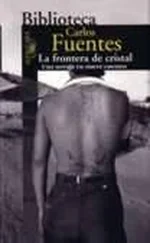Nevertheless, despite his battles with reality, Don Quixote insists upon seeing giants where there are only windmills and armies where there are only flocks of sheep. He sees them because he has read about them. He sees them because the things he has read have told him to see them that way. His reading is his madness. Su lectura es su locura.
Cervantes’s genius lies in his ability to transform this fable of chivalric nostalgia into the foundational novel of critical modernism. Because while it emerges from a dogmatic world of certainty and faith, Don Quixote is itself the incarnation of the modern world and all its uncertainty.
Everything is uncertain in the Quixote. The authorship, uncertain. Who wrote the book? Cide Hamete Benengeli, the Arab scribe whose papers were translated into Spanish by an anonymous morisco writer? The author of the apocryphal version, Avellaneda, whose falsehoods lead Don Quixote to a printing press where he discovers that he is a character in a book? Some man named Cervantes? Somebody called De Saavedra? The adversity of the former? Or the liberty of the latter?
Uncertain name: Don Quixote is but one of the many names of a certain Alonso Quijano (or might it be Quezada, or Quixada?) who calls himself Quijote for a more epic effect, but who becomes Quijotiz for a more pastoral effect, or Azote for micomicomical effects 4in the castle of the Dukes. The names constantly change. Rocinante was Rocín antes: literally, “Rocín, before.” The idealized damsel Dulcinea is actually Aldonza, a common peasant woman. The names of the enemies change too. The enchanter Mambrino becomes the malevolent Malandrino. Even the authors of the book, already somewhat ambiguous, change names. In Sancho’s version, Benengeli becomes Berenjena — that is, “aubergine.”
Uncertain places: to start with, the very place from which Don Quixote emerges, “somewhere in La Mancha, in a place whose name I do not care to remember.” 5And yet is there any doubt that this is the decadent Spain of Philip III, the Spain of rampant corruption, aristocratic whims, cities teeming with destitute souls, the Spain of rogues and violent assaults? The Spain of Roque Gunart, the real-life attacker and contraband smuggler who makes his appearance in the novel.
Uncertainty of the genre; Cervantes inaugurates the modern novel by breaking through every genre so that they all may have room to exist in a genre of genres, the novel. The epic tale of Quixote evolves, hand in hand, with the picaresque tale of Sancho. But Cervantes also gives a voice to the morisco story, the romantic novel, the Byzantine narrative, comedy and drama, philosophy and the carnival, as well as the novel within the novel.
His patent disregard for the purity of the genre is as remarkable as that of his great contemporary Shakespeare — so contemporary that they died on the same date, April 23, 1616, if not the same day, for Cervantes went by the Gregorian calendar, whereas Shakespeare lived by Julian hours. But purity was not what Shakespeare and Cervantes were after: what they cared about was poetic liberty, in its broadest possible form.
The modern uncertainty of Don Quixote does not, however, exclude the lasting values that modernity must save, or perpetuate, so as not to dissipate into moral ambiguity. One of these values is love, and on this point at least, Don Quixote does not delude himself. He idealizes Dulcinea but, in one surprising passage, admits that she is, in fact, Aldonza, the stocky country peasant woman. But doesn’t this quality of love possess the ability to transform the beloved into something incomparable, something above and beyond the considerations of wealth or poverty, vulgarity or nobility? “And therefore,” says Don Quixote, “it is enough for me to think and believe that my good Aldonza Lorenzo is beautiful and virtuous; as for her lineage, it matters little. . I depict her in my imagination as I wish her to be. . Let each man say what he chooses. . ”
The other value is honor, personal integrity, and on this point Don Quixote’s arrival at the castle of the Dukes is the most revealing episode of all. Until this moment, the Knight of the Sorrowful Countenance has believed that the inns he has visited were castles and the servant girls, princesses. Now, when the Dukes offer him a real castle with genuine princesses (plus an island for Sancho to rule over), the Quixotic illusion falls apart. Reality robs him of his imagination. Love turns into something cruel: the farces of Clavileño and the Dolorous One. When Quixote’s dreams become reality, Quixote can no longer imagine.
He returns to his village. He emerges from his madness, though only to die. “There are no birds today in yesterday’s nests.” With good reason Dostoevsky said that Don Quixote is “the saddest book ever written, for it is the story of an illusion lost.”
Lost Illusions is the title that Balzac gives his magnificent series of Lucien de Rubempré novels, proving that Don Quixote is the founder of the modern world, bestowing upon it novels of tears and sadness, illusion and disillusion, the logic of madness, the madness of logic, the uncertainty of all things, and the certainty that all lasting reality is based firmly on the imagination.
Don Quixote is a reader. Or, perhaps more to the point, his reading is his madness. Possessed by the madness of reading, Don Quixote would like to take the things he has read — books of chivalry — and turn them into reality. The real world, the world of goatherds, marauders, innkeepers, servant girls of ill repute, and chain gangs, fails to meet Don Quixote’s illusions, wearing out the poor hidalgo, bruising him and thrashing him about.
Despite the beating he has been given by the real world, Don Quixote nevertheless insists upon seeing giants where there are only windmills. He sees them because that is what his books tell him to see.
But there is one extraordinary moment when the voracious reader Don Quixote discovers that he, the reader, is also being read.
This is the very first moment in the history of literature in which a character, Don Quixote, enters a printing press in— where else? — Barcelona. He has made his way there to denounce the apocryphal version of his adventures, published by a man called Avellaneda, and to tell the world that he, the genuine Don Quixote, is not the false Don Quixote of Avellaneda’s version.
Don Quixote travels through the noble city of Barcelona and comes upon a sign that reads BOOKS PRINTED HERE. He enters the printing press and watches the work as it is being carried out, and sees the printers “printing in one place, correcting in another, typesetting here, revising there,” until he realizes that the book being printed is in fact his own novel, The Ingenious Gentleman Don Quixote de la Mancha, a book that recounts, to Sancho Panza’s consternation, things that only he and his master spoke about, secrets that the printing and subsequent reading will make public, thus subjecting the protagonists of the story to the critical, democratic realm of knowledge and analysis. Scholasticism has died. Free analysis has been born.
Unlike any other literary moment either before or after, this moment in Don Quixote reveals the liberation that comes about from the editing, publication, and reading of a book. From this moment on, literature and, by extension, the book itself, become the repositories of a truth revealed not by God nor the power structure but by the imagination — that is, the human ability to mediate between sensation and perception and to establish a new reality that is the fruit of that mediation, a new reality that would no longer exist were it not for the verbal experience of Cervantes’s Quixote, Pablo Neruda’s Canto General, or Stendhal’s The Red and the Black.
Читать дальше
